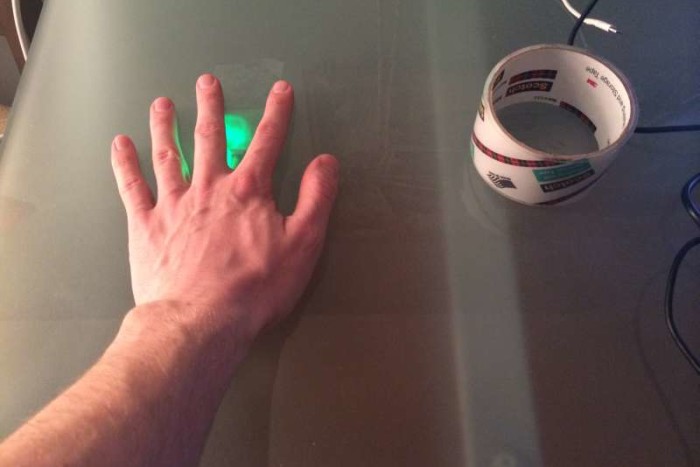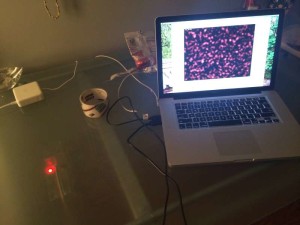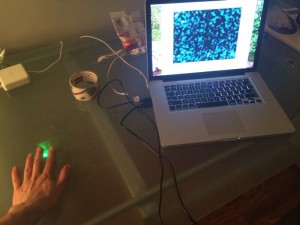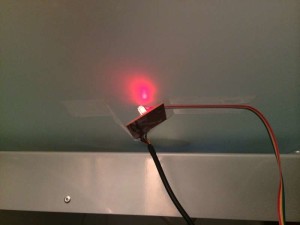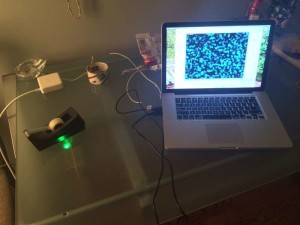Using my previous output circuit, I was able to come up with an interesting design technology: an object detector for your table top. This one is somewhat simple to understand:
- ambient light sensor is placed under the glass table (works only with transparent table tops)
- object placed on top of region occludes light source from the sensor, causing light measurement to change in sensor
- sensor values are sent to laptop via FTDI/serial connection
- opens up a myriad of use cases for laptop user interface (trigger an event, know something about the environment)
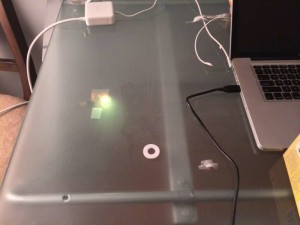 I spent a lot of time thinking about the various use cases of such a device, but couldn’t come up with any uses that were compelling. I’m sure there’s something to this, but since I couldn’t think of a good use case, I used this opportunity to learn how to use OpenFrameworks.
I spent a lot of time thinking about the various use cases of such a device, but couldn’t come up with any uses that were compelling. I’m sure there’s something to this, but since I couldn’t think of a good use case, I used this opportunity to learn how to use OpenFrameworks.
I took an OpenFrameworks sample, and just wanted to display some pretty visual output with the device. Please contact me if you think of any good use cases for this scenario.
Below are some examples of how it works:
Perhaps it could be used to let you know if your desk is getting messy? Or maybe it could be used as a monolithic switch or button for controlling something on your laptop (shuffle the current playing song, dim the screen, login/logout, etc.)
Perhaps one could network many of these together, all over the table to determine the direction of light shining on the table.
One could also create a color sensor, combining three of these with red/green/blue filters to get the predominant color of an object, which could be used to roughly identify objects.
Truth is, all of these scenarios are easy to implement in software, but none of them seem worthwhile.

